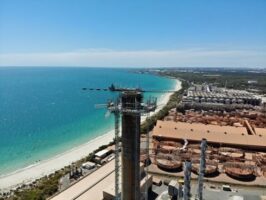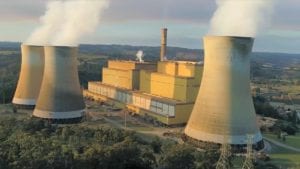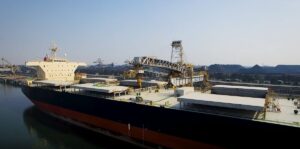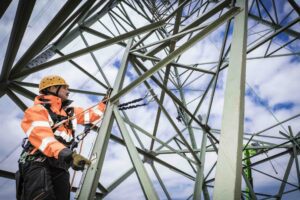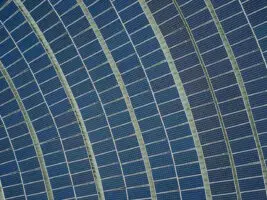
For a long time, Australian governments have believed that the private sector should run the electricity sector. And successive governments have used market instruments to incentivise reducing emissions, by supporting renewables, discouraging coal use, or both.
Now things seem inside out: uncertainty about energy policy mechanisms is pervasive, and the federal government is attempting to broker a deal for the ageing Liddell coal plant to stay open past its planned decommissioning date. It’s possible the plan will require government payments – amounting to a carbon subsidy.
Fear of supply shortages and an appetite for coal have combined with an inability to resolve the political side of energy and climate policy.
Power companies see coal as a technology of the past, but the government seems unready to accept that wind and solar technologies (already the cheapest option for new capacity in Australia) are the future of Australia’s power.
The latest suggestion amounts to deferring serious investment in renewables for a while, fixing up some of the old coal plants up so they can run a few more years, and buying time in the hope of keeping power prices down. Chief Scientist Alan Finkel has backed the idea, at least in principle.
The cost of delaying the inevitable
Commissioned in 1972, the Liddell power plant is the oldest of Australia’s large coal-fired stations (after the closure of the Hazelwood station). The New South Wales government sold it to AGL in 2014, at an effective price of zero dollars.
AGL announced some time ago that it will close the plant in 2022 and has considerable financial incentive to do so. This week AGL reiterated this. The latest suggestion is that Delta Electricity might buy and continue to operate Liddell.
What might be the benefits and costs of keeping Liddell running for, say, another decade? We do not know the plant-level technical and economic parameters, but let’s look at the principles and rough magnitudes.
Keeping the plant running longer will require refurbishments, defer the investment costs in renewables, and result in additional emissions, both in carbon dioxide and local air pollutants.
Refurbishment is costly. Finkel put refurbishment costs at A$500-600 million for a 10-year extension. Such refurbishment might achieve an increase in efficiency – as GE, a maker of power station equipment, recently argued – but perhaps not by much for a very old plant like Liddell.
And refurbishment might not work so well, as the experience with the Muja plant in Western Australia shows: A$300 million was spent on refurbishment that ultimately failed. Spending big money on outdated equipment is not a particularly attractive option for energy companies, as AGL’s CEO recently pointed out.
Liddell’s power output during 2015-16 was around 8 terawatt hours – about 10% of present NSW power supply (it was more in 2016-17, and less in previous years). It might well be lower as the plant ages.
Ironically, the reduction in the Renewable Energy Target, from 41 to 33 terawatt hours per year, almost exactly matches Liddell’s present power output. With the original RET target, new renewables would have covered Liddell’s output by 2020.
Liddell emitted around 7.5 million tonnes of carbon dioxide per year in 2015-2016. With the assumed reduction in output and some improvement in CO₂ emissions intensity, the carbon dioxide output might be in the order of 5-6 million tonnes per year, or 50-60 million tonnes over ten years.
If the government were to pay for the refurbishment, as has been suggested, this would equate to subsidising CO₂ emissions at a rate of perhaps $10 per tonne, compared to the alternative of replacing Liddell with renewable power.
At the same time, the government is paying for projects to reduce emissions, at average prices of around $12 per tonne of carbon dioxide, under the Emissions Reduction Fund. The contradiction is self-evident. Furthermore, keeping more coal plants operational deters commercial investment in any kind of new plants.
Of course this needs to be seen in the context of supply security, any subsidies that might be paid in future to renewable energy generators, and the possibility that a Clean Energy Target will determine overall emissions from electricity production irrespective of whether Liddell operates or not. It’s complicated. But the fundamental point is clear: paying for an old coal plant to operate for longer means spending money to lock things in, and delay the needed transition to clean power.
A possible compromise might be to mothball the Liddell plant, to use if supply shortages loom, for example, on hot summer days. But such a “reserve” model could mean very high costs per unit of electricity produced.
It is not clear that it would be cheaper than a combination of energy storage and flexible demand-side responses. And it may be unreliable, especially as the plant ages further. During the NSW heatwave last summer Liddell was not able to run full tilt because of technical problems.
A market model to pay for reserve capacity would surely do better than government direction.
Australia’s energy companies have been calling for a mechanism to support new clean investment, such as the Clean Energy Target. And many would no doubt be content to simply see a broad-based, long-term carbon price, which remains the best economic option. If the policy framework was stable, private companies would go ahead with required investment in new capacity.
Meanwhile, federal and state governments are intervening ad-hoc in the market – making a deal to keep an old plant open here, building and owning new equipment there. It is the worst of all worlds: a market-based system but with extensive and unpredictable intervention by governments that tend to undermine investor confidence.
Director, Centre for Climate Economics and Policy, Australian National University and co-author PhD student, Australian National University
Source: The Conversation. Reproduced with permission.

